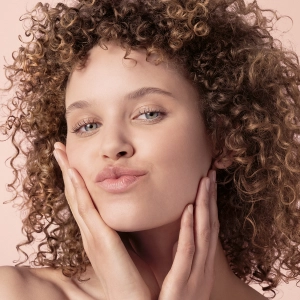Causes
Specific glands in human skin secrete an oily substance, sebum. This reaches the surface of the skin through a duct along the hair shaft, where it forms a protective layer that is important for healthy skin. Sebum production is mainly influenced by sex hormones. During puberty, there is an increase in the production of sebum due to hormonal changes. If the duct leading to the surface of the skin is also blocked, for example, by the skin producing too many keratinised cells due to a genetic predisposition, then the sebum builds up and blackheads develop. However, bacteria can also grow in the sebum build-up and cause inflammation in the surrounding tissue. Acne develops. Different severity levels are distinguished, depending on the extent of the disease (see image).
Acne thus has nothing to do with inadequate hygiene. There is also no evidence that certain foods, e.g. chocolate, have any effect on the development of acne. In contrast, we know that the manipulation and squeezing out of blackheads promotes inflammation.
Options for treatment
Acne can be treated. However, treatment must be administered at an early stage to prevent scarring. Measures for treatment target the overproduction of sebum, the keratinisation disorder, bacterial growth and the infection that is thus caused. Different forms of acne require different forms of treatment. Good therapeutic results can be achieved with the preparations that are available today and their consistent use. Four to six weeks are generally required for the first successful results to become visible.
A distinction is made between topical and systemic (internal) treatment with reference to forms of treatment for acne. Topical treatment, in mild cases of acne, involves the application of a cream or gel to the skin after gentle cleansing, the active substances of which open up the blocked pores and have an anti-inflammatory and antibacterial effect.
The dermatologist may also prescribe targeted systemic treatment with, e.g. antibiotics, isotretinoin and also hormones in women (contraceptive pill) in severe cases of acne when topical treatment alone is insufficient. Isotretinoin is a substance that reduces keratinisation of the skin and sebum production and also inhibits inflammation.
skinappeal – Your Louis Widmer skincare line of choice for acne
Skinappeal provides effective cleansing and care products for cleansing routines for blemished skin prone to acne. The products with ingredients such as panthenol, allantoin and fruit acids have emerged from the successful Dermatologica Widmer product range, which was developed in close cooperation with dermatologists.



